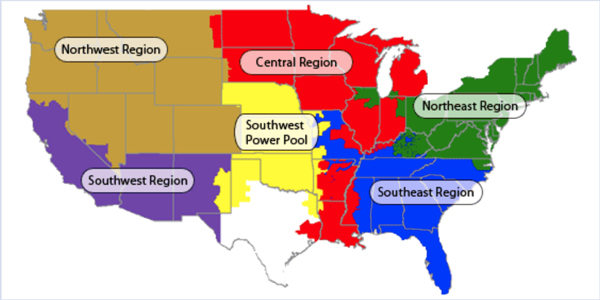By Tom Kleckner

The commission noted CFE International would place itself under FERC’s jurisdiction as a public utility and accepted its market-based rate authority, effective July 1. It also agreed with the company’s request for certain waivers and blanket authorizations commonly granted to market-based rate sellers.
Houston-based CFE International was formed in 2015 to market energy commodities. Its only member is Comisión Federal de Electricidad (CFE), the Mexican government-owned electric utility.
FERC ruled CFE International, as it requested, meets the criteria to be a Category 2 seller in the Southwest region (primarily California, Arizona and New Mexico) and a Category 1 seller in the Central, Southeast, SPP, Northeast and Northwest regions.
FERC created the two categories in 2007 with Order 697. Category 1 sellers are wholesale power marketers or producers that own or control 500 MW or less of generation capacity in aggregate per region; do not own, operate or control transmission facilities, other than interconnection facilities; are not affiliated with transmission owners in the same region as the seller’s generation assets; are not affiliated with a franchised public utility in the same region as the seller’s generation assets; and do not raise other vertical market power issues.
Category 2 sellers are those that don’t fit into Category 1 and are required to file updated market power analyses.
CFE International had to clear FERC screens for horizontal and vertical market power. The commission agreed with the company’s claim that neither it nor its affiliate owns, operates or controls generation capacity in the United States but that CFE owns or contracts with capacity in Mexico. The company said its affiliated generation in Mexico could transfer up to 800 MW to the United States via two interties connected to CAISO, making that market the appropriate one to analyze its horizontal market power.
To pass the vertical power screen, CFE International had to show it had an open-access transmission tariff (OATT) on file or a FERC-approved waiver. Because CFE owns, controls or operates transmission facilities in Mexico that can be used by competitors to reach U.S. markets, CFE International had to prove its affiliate had a tariff or offered “comparable, non-discriminatory access” to its facilities.
The company noted CFE does not control or assign access to its facilities or Mexico’s transmission system, arguing all market participants receive access to the system because of their participation in the energy and ancillary services markets managed by the National Energy Control Center (CENACE) ISO. CFE International said participants could provide transmission service over the interties if CENACE cleared their bids in the day-ahead market.
FERC agreed with CFE International that network service in Mexico is comparable to the services provided under the pro forma tariff (OATT) in the United States.
There are three other interties between Mexico and the United States, all through ERCOT. Texas’ Public Utility Commission, which has jurisdiction over ERCOT, said it saw no issue with the order, pointing to a July ruling by FERC easing concerns over potential federal oversight. (See FERC OKs DC Tie Operations Between Texas, Mexico.)
An SPP spokesperson said the ruling won’t have an effect on its markets. He said, technically, CFE International could have already been making offers into the markets.





